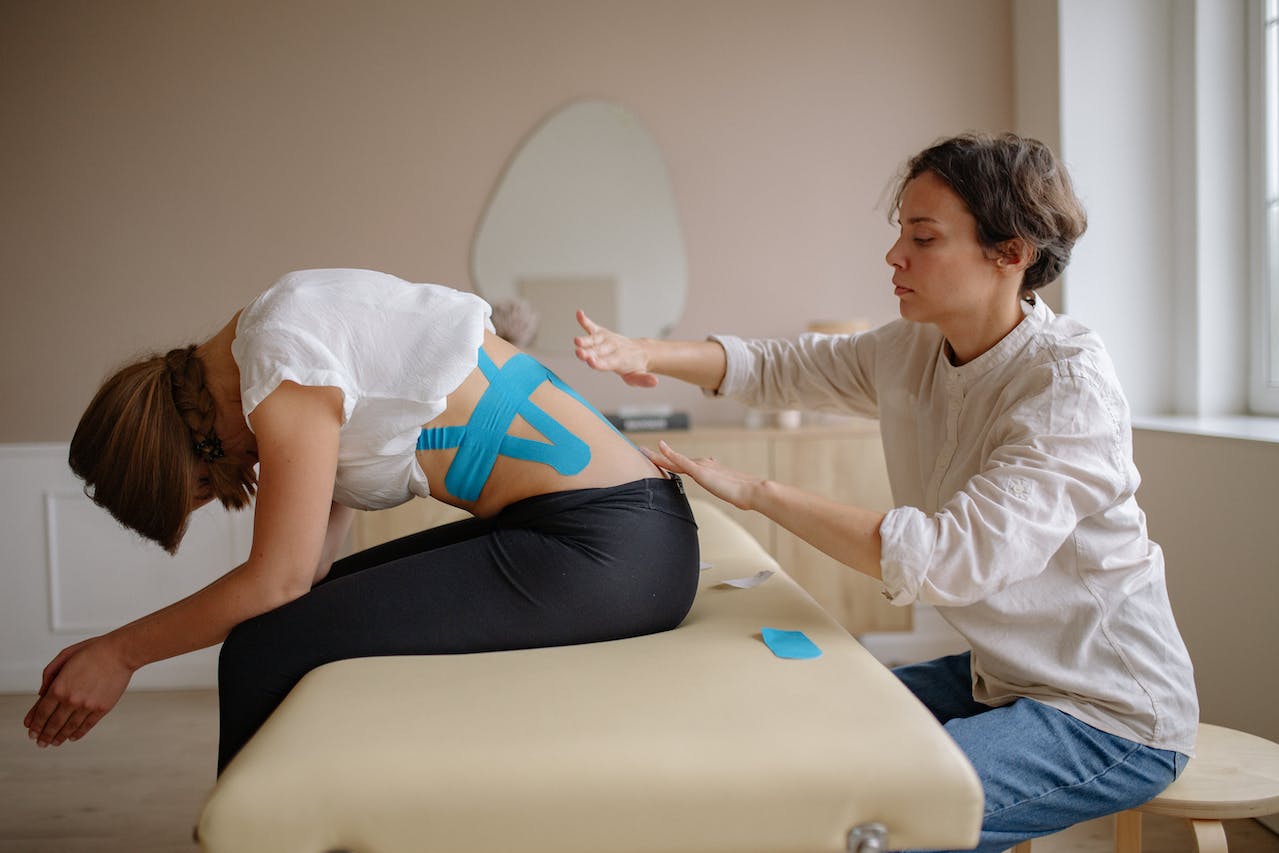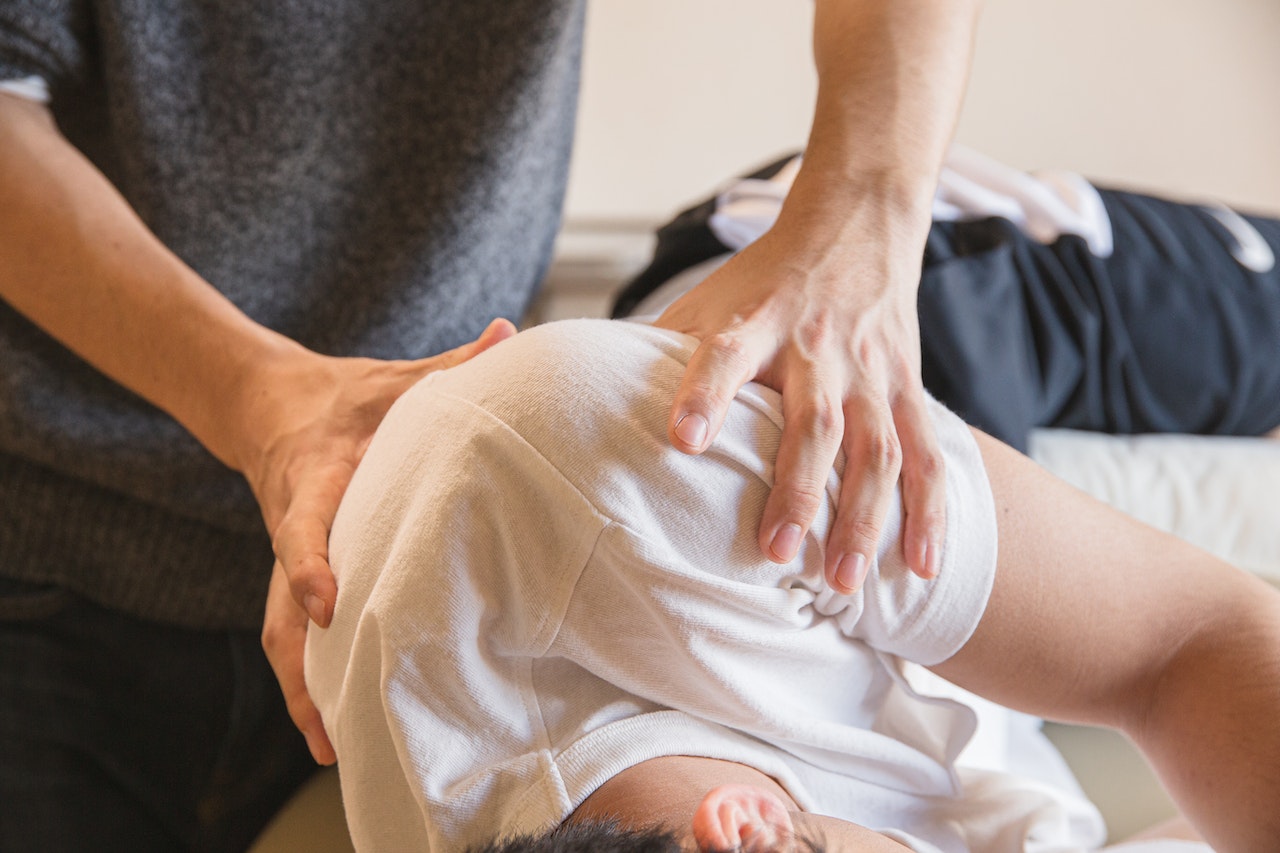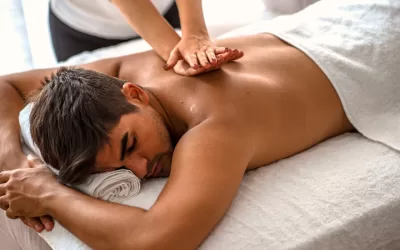More athletes, especially runners and those in sports, are turning to Structural Integration for a comprehensive approach to enhance their overall well-being, and increase flexibility, and performance through integration. This specialized form of bodywork focuses on alignment, movement patterns, and releasing tension to optimize physical function. By addressing the body as a whole and focusing on the integration of fascia, Structural Integration aims to improve flexibility, balance, and efficiency in movement. Athletes are increasingly recognizing the benefits of Structural Integration in preventing injuries, accelerating recovery, increasing flexibility, and maximizing their athletic potential.
Structural Integration Explained
Understand how Structural Integration works by integrating changes through touch, realigning the body’s fascia structure, and enhancing overall well-being. This technique focuses on improving movement patterns, reducing stress levels, and boosting athletic performance.
Learn about the philosophy behind Structural Integration, which sets it apart from traditional massage methods. Unlike regular massages that target surface muscles, Structural Integration delves deeper into the body’s fascia, connective tissue, to address underlying issues.
Discover how Structural Integration can benefit athletes in sports by addressing specific motor requirements, optimizing gravity’s impact on the body, and integrating work to unlock potential. Athletes often find themselves feeling more at ease in their daily lives after undergoing Structural Integration sessions.
Fascia Focus
The fascia plays a crucial role in the body as a connective tissue that surrounds muscles and organs. When fascial restrictions occur, they can limit mobility, and lead to pain, and discomfort for athletes.
Structural Integration targets these fascial restrictions through manual manipulation, releasing tension, and restoring flexibility. By addressing fascial health, athletes can experience an improved range of motion and enhanced performance.
Highlight the importance of maintaining healthy fascia for athletes, as it directly impacts their flexibility, strength, and overall physical resilience during training and competitions.
Process Overview
In a typical Structural Integration session, clients go through a series of steps aimed at realigning their bodies for improved function and integration. The practitioner uses hands-on techniques to manipulate tissues gently but effectively.
The hands-on approach used in Structural Integration involves applying precise pressure to release tension within the fascia layers. Each session is tailored to meet the individual needs of the client, ensuring a personalized experience every time.
Emphasize how each Structural Integration session is uniquely designed to address specific concerns or areas of discomfort for clients seeking relief from chronic pain or looking to enhance their athletic performance by helping fascia.
Benefits Overview
- Holistic benefits: Improved posture, enhanced flexibility
- Long-term advantages: Reduced risk of injuries, better muscle coordination
- Mental & emotional benefits: Stress relief, increased mind-body connection
Athletic Performance Enhancement
Structural Integration techniques enhance athletic performance by targeting specific muscle groups, improving body alignment, and optimizing overall function. This approach aids in increasing flexibility and range of motion for athletes, facilitating better movement patterns and lowering the risk of injuries during sports activities.
Moreover, Structural Integration plays a crucial role in improving posture among athletes. By correcting postural imbalances, it leads to better body mechanics and enhanced performance across various sports disciplines. Athletes benefit from reduced stress levels, pain, and relaxation through Structural Integration sessions, resulting in faster recovery times and improved mental focus for peak athletic performance.
Muscle Function
Structural Integration significantly contributes to enhancing muscle function and relieving pain by addressing areas of tension or imbalance within the muscles and fascia. Through targeted manipulation techniques, Rolfers can improve muscle balance, which directly impacts an athlete’s overall performance on the field or track.
The impact of muscle balance on athletic performance cannot be overstated. By ensuring that specific muscle groups are functioning optimally, athletes experience increased strength, agility, and endurance during training sessions and competitive events. Structural Integration sessions focus on key areas such as the legs, back muscles, shoulders, and neck to promote maximum efficiency in movement patterns.
Movement Quality
. Improved movement efficiency is closely linked to success in various sports disciplines due to enhanced coordination and precision.
Athletes who undergo regular Structural Integration treatments experience smoother biomechanics during physical activities like running or weightlifting. This improved movement quality not only boosts athletic prowess but also acts as a preventive measure against common sports-related injuries such as strains or sprains.
Posture Improvement
Posture plays a critical role in determining an athlete’s overall performance level across different sporting events. Corrective measures taken through Structural Integration help address postural imbalances that may hinder optimal physical function during training or competitions.
Holistic Health Benefits
Structural Integration offers a holistic approach to health, focusing on integrating the mind, body, and spirit for a transformative experience. Through structural integration techniques, individuals can enjoy many benefits, including improved posture, reduced pain, and increased flexibility. This approach not only addresses physical ailments but also nurtures emotional well-being by enhancing body awareness and reducing stress levels.
By fostering a sense of whole-body awareness, Structural Integration helps individuals achieve a more balanced and harmonious life. Athletes particularly benefit from this practice as it elevates their athletic performance by promoting better alignment, mobility, and coordination within the human body. The overall effects are both physical and mental, leading to optimal performance levels on the field or court.
Pain Relief
Individuals undergoing Structural Integration sessions experience significant relief from muscular pain. Unlike temporary solutions like painkillers that merely mask symptoms temporarily, Structural Integration provides long-lasting results by addressing the root causes of pain. Common sports-related pains such as muscle strains, joint soreness, and tendonitis can be effectively alleviated through targeted Structural Integration techniques.
Flexibility Increase
Flexibility plays a crucial role in enhancing athletic performance as it directly impacts an athlete’s range of motion and agility. Structural Integration contributes to improving flexibility in athletes by releasing tension in muscles and fascia while restoring balance to the body’s structure. Balanced flexibility is essential for preventing injuries commonly associated with sports activities.
- Increased range of motion
- Enhanced agility
- Improved muscle elasticity
Injury Recovery
Structural Integration serves as an effective aid in the recovery process post-injuries by promoting faster healing and rehabilitation. It plays a vital role in preventing recurring injuries by addressing underlying imbalances or weaknesses that may lead to further damage if left unattended. Proper rehabilitation through techniques like Structural Integration is crucial for athletes looking to bounce back stronger after setbacks.
- Accelerated healing process
- Prevention of future injuries
- Restoration of optimal function
Unique Aspects of Structural Integration
Structural Integration enhances body awareness by deepening the connection individuals have with their bodies. This leads to a better understanding of movement patterns and sensations during physical activities. Athletes benefit from this increased awareness as it helps them fine-tune their movements for optimal performance.
Moreover, Structural Integration techniques can effectively increase flexibility in athletes. By targeting specific areas through manipulation and pressure, Structural Integration helps loosen tight muscles and tissues, allowing athletes to move more freely and efficiently. This enhanced flexibility contributes to improved athletic performance across various sports disciplines.
One of the key focuses of Structural Integration is on improving posture. By addressing structural imbalances in the body, Structural Integration sessions work towards correcting posture issues that may lead to discomfort or injuries. Athletes who undergo Structural Integration experience improved alignment, which not only enhances their physical appearance but also reduces the risk of injuries during training and competitions.
Structural Integration adopts a holistic approach to healing that sets it apart from traditional therapies. Through a combination of deep tissue work, stress reduction techniques, and targeted exercises, Structural Integration provides athletes with a transformative experience that goes beyond physical benefits. This holistic approach addresses not only the physical aspects but also mental well-being, making it a comprehensive solution for athletes seeking overall improvement.
Compared Therapies
- Structural Integration stands out from traditional massage therapies due to its emphasis on structural integration, which aims at aligning the body properly.
- Unlike conventional massages that focus mainly on relaxation, Structural Integration targets deeper layers of tissues for long-lasting effects.
- The combination of movement education in Structural Integration distinguishes it from other therapies by promoting lasting changes in an individual’s posture and movements.
Haptic System Opening
Exploring the concept of haptic system opening in Structural Integration reveals its profound impact on enhancing athletes’ body awareness. The haptic system is like a special radar inside our bodies that helps us feel things better.
When athletes go through Structural Integration sessions that focus on this system, they become more tuned in to what their bodies are telling them. Imagine you’re playing your favorite sport, and you suddenly feel a little off balance. With a well-tuned haptic system, you can quickly adjust your movements to regain balance and keep going strong.
This is what happens when athletes work on opening up their haptic system through Structural Integration – they become more in sync with their bodies and can perform better. When athletes are more aware of their bodies, they can move more smoothly and efficiently. It’s like having a superpower that helps them react faster and perform at their best. By paying attention to these subtle cues from their bodies, athletes can prevent injuries and reach peak performance levels.
In simple terms, haptic system opening in Structural Integration is like giving athletes a secret weapon that boosts their body awareness and helps them excel in their sports. It’s not just about feeling good during a session; it’s about unlocking the hidden potential within their bodies to become better, stronger, and more successful athletes.
Structural Integration vs. Traditional Training
Movement Execution
Structural Integration enhances movement execution by correcting imbalances and aligning the body for optimal performance. Through targeted sessions, athletes can improve their coordination and movement efficiency, leading to better overall athletic abilities. The focus on aligning movement patterns sets Structural Integration apart from traditional training methods.
Body awareness plays a crucial role in executing movements accurately. Athletes who undergo Structural Integration sessions often experience a heightened awareness of their bodies, leading to more precise movements during exercises and sports activities. This increased body awareness translates into improved performance on the field or track.
Enhanced movement execution resulting from Structural Integration can significantly benefit athletes in various sports disciplines. For instance, a runner with improved posture and gait alignment through Structural Integration may experience increased speed and endurance during races. Similarly, a weightlifter with better body awareness can optimize their lifting technique for enhanced strength gains.
Squat Deadlift Quality
In strength training, maintaining proper squat and deadlift form is essential for maximizing muscle engagement and preventing injuries. Structural Integration focuses on optimizing an athlete’s biomechanics during these compound exercises to ensure safe and effective performance in the gym.
The integration of Structural Integration techniques into squat and deadlift routines can lead to significant improvements in exercise quality. By addressing muscular imbalances and alignment issues, athletes can achieve better movement mechanics during squats and deadlifts, ultimately enhancing their strength gains while minimizing the risk of strains or sprains.
Optimizing squat and deadlift mechanics through Structural Integration not only improves exercise effectiveness but also promotes long-term joint health for athletes engaging in strength training regimens. Athletes who prioritize proper technique with the support of Rolfers are likely to see greater progress in muscle development while reducing the likelihood of workout-related injuries.

Structural Integration for Recreational Athletes
Recreational athletes are increasingly turning to rolfing to enhance their athletic performance. This holistic approach focuses on improving movement patterns and increasing flexibility, crucial for excelling in various sports and exercises. By reducing stress levels, rolfing contributes to better overall performance.
Addressing imbalances and restrictions in the body through rolfing can prevent injuries among recreational athletes engaged in high-impact activities like running. It facilitates faster healing processes post-injury, ensuring minimal disruption to training routines.
For recreational athletes seeking personalized care, rolfing offers a tailored approach that aligns with their specific needs and fitness goals. This individualized attention optimizes their overall performance and well-being, setting them up for success in their athletic pursuits.
The benefits of rolfing extend beyond physical improvements; they also include enhancing posture and fostering increased body awareness. These advantages play a vital role in the journey of recreational athletes aiming to excel in their chosen sport or fitness regimen.
Gym Membership Rise
- The surge in gym memberships among athletes signifies a growing inclination towards holistic approaches to fitness.
- Athletes are increasingly recognizing the value of combining traditional gym workouts with complementary practices like rolfing for enhanced results.
Sustainable Movement Change
Sustainable movement change holds immense significance for athletes striving for long-term success. Through sessions of rolfing, individuals experience lasting improvements in their movement patterns. Consistent practice is key to maintaining sustainable changes achieved through rolfing, emphasizing the importance of integrating this holistic approach into regular training routines.
Certified Rolfer Importance
Certified Rolfers are essential for athletes seeking to improve their athletic performance. They possess the expertise to address the unique needs of both recreational and professional athletes. By delving deep into an athlete’s body mechanics, Certified Rolfers can identify specific motor requirements necessary for optimal performance.
These professionals offer more than just traditional massage; they provide a holistic approach that focuses on increasing flexibility and enhancing overall well-being. Through specialized techniques, Structural Integration sessions aim to reduce pain, release muscle tension, and foster stress reduction. This enables athletes to operate at their best during competitions and recover swiftly after intense training sessions.
Rolfers also play a vital role in educating athletes about movement patterns and enhancing body awareness. By combining movement education with targeted massage therapy, Certified Rolfers help athletes optimize their movement efficiency and unlock their full potential in sports.
Finding a Rolfer
- Research online reviews or ask for recommendations from fellow athletes
- Look for Certified Rolfers with experience working with athletes in your sport
- Schedule initial consultations to assess compatibility and treatment approach
Certification Process
Becoming a certified Rolfer involves rigorous training and education focused on structural integration principles. Aspiring Rolfers undergo extensive coursework that includes anatomy, physiology, and hands-on practice under the guidance of experienced instructors.
The certification process typically consists of completing a series of training modules followed by practical assessments to ensure proficiency in delivering high-quality treatment. Choosing a certified Rolfer guarantees that athletes receive professional care backed by comprehensive knowledge in structural integration techniques.
Preparing for Structural Integration
Before your Structural Integration session, incorporate specific exercises to enhance body awareness and movement patterns. These exercises help you tune into your body’s needs and better understand areas of tension or discomfort. By doing so, you can communicate these insights effectively with your Rolfer during the session.
To prepare both mentally and physically, practice stress-reducing techniques like deep breathing or meditation. This helps calm your mind, allowing you to fully embrace the healing benefits of Structural Integration. Relaxation techniques can also aid in releasing any pre-session anxiety or tension, promoting a more effective session.
Engaging in gentle stretching routines before your session can significantly benefit the outcomes of Structural Integration. Stretching helps increase flexibility, preparing your muscles for manipulation during the session. Improved flexibility not only complements the effects of Structural Integration but also enhances the overall experience by promoting relaxation and reducing stiffness.
Proper hydration and nutrition are crucial aspects to consider before a Structural Integration session. Staying hydrated supports tissue manipulation during the process, aiding in reduced pain and improved ease of movement post-session. Nutrient-rich foods provide essential building blocks for tissue repair and recovery after intense bodywork.
Session Preparation
Athletes should prioritize their well-being before a Structural Integration session by focusing on hydration, relaxation techniques, and mental readiness. Hydrating adequately ensures that tissues are pliable for manipulation during the treatment while relaxation techniques help ease any pre-session tension or anxiety.
Preparing mentally involves setting intentions for the session, visualizing positive outcomes from the treatment, and being open to receiving healing benefits from Structural Integration. Athletes who approach their sessions with a clear mind and positive attitude tend to experience more profound results from their treatments.
Being physically prepared entails engaging in light physical activities such as walking or gentle stretches to warm up muscles before the session begins. This primes the body for deeper work during Structural Integration while also enhancing circulation and promoting relaxation throughout the treatment.
Post-Treatment Care
After a Structural Integration session, it is essential to engage in post-treatment care practices that maximize its benefits over time. These may include gentle movements or stretches recommended by your Rolfer to maintain alignment achieved during the treatment.
Structural Integration Success Stories
Athletes across various disciplines are turning to Structural Integration for its many benefits in enhancing their overall well-being and athletic performance. Through this holistic approach, athletes have reported significant healing and stress reduction, attributing their improved performance to the transformative effects of Structural Integration sessions.
Athlete Testimonials
- Athletes who have undergone Structural Integration sessions praise the technique for its profound impact on their physical and mental well-being.
- Personal stories highlight how athletes experienced reduced pain, increased mobility, and enhanced performance after incorporating Structural Integration into their training routine.
- These testimonials underscore the positive influence of Structural Integration on various aspects of athletic performance, from injury prevention to post-exercise recovery.
Life Changes
Embracing Structural Integration can lead to profound life changes for athletes seeking a comprehensive approach to health and fitness. The practice’s focus on alignment, movement patterns, and body awareness can result in lasting transformations that extend beyond physical benefits.
- Athletes often report feeling more connected to their bodies and experiencing a heightened sense of overall well-being after regular Structural Integration sessions.
- The transformative effects of holistic health practices like Structural Integration can empower athletes to make positive lifestyle changes such as adopting healthier habits or improving their mindset towards training.
Summary
In exploring the reasons why more athletes are turning to Structural Integration for holistic health and enhanced performance, it becomes evident that this alternative therapy offers a unique approach. By delving into the core principles of Structural Integration, its impact on athletic performance, and the myriad holistic health benefits it provides, athletes are finding a comprehensive solution to their physical well-being. Moreover, the comparison between Structural Integration and traditional training methods sheds light on the distinctive advantages this practice offers, making it a compelling choice for both professional and recreational athletes alike.
For those seeking a well-rounded approach to their athletic journey, considering Structural Integration as part of their regimen could prove to be a game-changer. The success stories shared by individuals who have embraced Structural Integration further solidify its efficacy in promoting holistic health and optimizing performance. As the landscape of sports medicine continues to evolve, integrating practices like Structural Integration may pave the way for a new era of athlete care and well-being.
Frequently Asked Questions
1. Why do athletes choose Structural Integration for holistic health and performance?
Athletes opt for Structural Integration due to its holistic approach to addressing physical imbalances, enhancing performance, and promoting overall well-being. It focuses on aligning the body structurally to optimize movement efficiency, leading to improved athletic performance.
2. Is Structural Integration suitable for recreational athletes as well?
Yes, recreational athletes can benefit from Structural Integration as it helps in preventing injuries, improve flexibility, and enhance overall performance. The structural integration provided by Structural Integration can aid in optimizing movement patterns even for individuals engaging in sports recreationally.
3. What makes Certified Rolfer important when considering Structural Integration?
Certified Rolfers have undergone extensive training and certification processes ensuring their expertise in the practice of Structural Integration. Their knowledge of anatomy, physiology, and hands-on skills are crucial in providing safe and effective sessions tailored to individual needs.
4. How does one prepare for a Structural Integration session?
Before a Structural Integration session, it is recommended to wear comfortable clothing that allows easy movement. Hydration is essential both before and after the session to support tissue manipulation. Arriving with an open mind ready for the experience can also enhance the benefits of the session.
5. Are there any notable success stories related to using Structural Integration for athletes?
Numerous athletes have reported significant improvements in their athletic performance after incorporating Structural Integration into their training regimen. From increased range of motion and flexibility to enhanced recovery time, many attribute their success on-field or court partially to regular sessions of this structural integration technique.
Unlocking Athletic Excellence with Structural Integration: Elevate Your Performance with MedicinEvolution’s Cutting-Edge Strategy!
Are you an athlete contending with sports injuries, chronic pain, or aiming to boost your overall performance? MedicinEvolution is at the cutting edge of incorporating Structural Integration into sports recovery and performance enhancement, guiding athletes to peak health and performance. By harnessing the principles of Structural Integration, MedicinEvolution targets the root causes of your discomfort, facilitating a natural and comprehensive healing journey. Say farewell to the hurdles of sports injuries, chronic pain, and the repetitive strain that hampers your athletic pursuits—as MedicinEvolution caters to the unique demands of your body, steering you towards profound relief and recovery. Their expertly tailored Structural Integration sessions are devised to transition you away from the pain and limitations that hinder your athletic potential.
If you’re an athlete struggling with enduring pain, injuries, or barriers to achieving your peak performance, MedicinEvolution’s specialized approach, rooted in the synergy of Structural Integration and sports recovery, is meticulously designed for you. Don’t let the challenges of injuries or chronic pain define the boundaries of your athletic capabilities—make the move and book your consultation with MedicinEvolution today! Embark on a path with their Structural Integration-focused interventions and start progressing towards a more pain-free, resilient, and enhanced athletic life. Your body and performance, freed from the constraints of discomfort, will thank you for the remarkable transformation!





